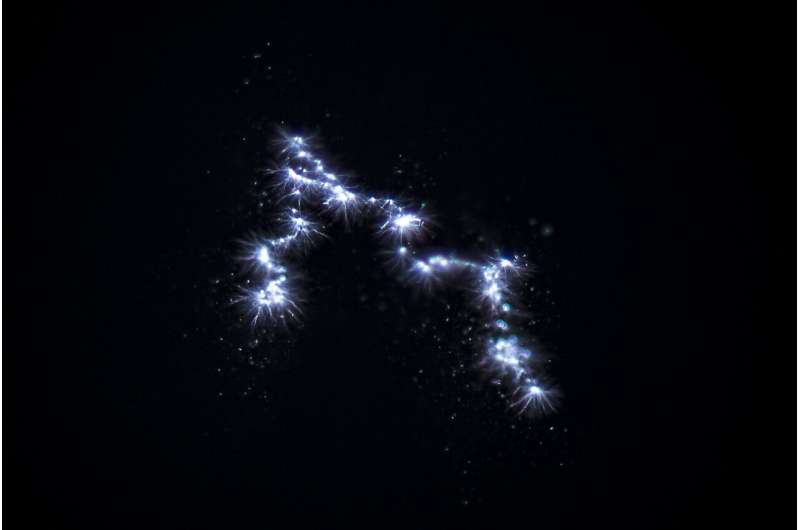Igniting plasmas in liquids

Physicists of Ruhr-Universität Bochum (RUB) have taken spectacular pictures that allow the ignition process of plasma under water to be viewed and tracked in real time. Dr. Katharina Grosse has provided the first data sets with ultra-high temporal resolution, supporting a new hypothesis on the ignition of these plasmas: In the nanosecond range, there is not enough time to form a gas environment. Electrons generated by field effects lead to the propagation of the plasma. The nanosecond plasma ignites directly in the liquid, regardless of the polarity of the voltage. The report from the Collaborative Research Centre 1316 "Transient Atmospheric Pressure Plasmas: from Plasma to Liquids to Solids" has been published in the Journal of Applied Physics and Rubin, the RUB's science magazine.
Making plasma development visible
In order to analyze how plasma ignites over short time spans and how this ignition works in the liquid, physicist Grosse applies a high voltage for ten nanoseconds to a hair-thin electrode immersed in water. The strong electric field thus generated causes the plasma to ignite. Using high-speed optical spectroscopy in combination with modeling of the fluid dynamics, the Bochum-based researcher is able to predict the power, pressure and temperature in these underwater plasmas. She thus elucidates the ignition process and the plasma development in the nanosecond range
According to her observations, the conditions in the water are extreme at the time of ignition. For a short time, pressures of many thousand bar are created, which is equivalent to or even exceeds the pressure at the deepest point in the Pacific Ocean, as well as temperatures of many thousand degrees similar to the surface temperature of the sun.
Tunnel effects under water
The measurements challenge the prevalent theory. So far, it has been assumed that a high negative pressure difference forms at the tip of the electrode, which leads to the formation of very small cracks in the liquid with expansions in the range of nanometres, in which the plasma can then spread. "It was assumed that an electron avalanche forms in the cracks under water, making the ignition of the plasma possible," says Achim von Keudell, who holds the Chair of Experimental Physics II. However, the images taken by the Bochum-based research team suggest that the plasma is "ignited locally within the liquid," explains Grosse.
In her attempt to explain this phenomenon, the physicist uses the quantum-mechanical tunnel effect. This describes the fact that particles are able to cross an energy barrier that they should not be able to cross according to the laws of conventional physics, because they don't have enough energy to do so. "If you look at the recordings of the plasma ignition, everything indicates that individual electrons tunnel through the energy barrier of the water molecules to the electrode, where they ignite the plasma locally, precisely where the electric field is highest," says Grosse. This theory has a lot going for it and is the subject of much discussion among experts.
Water is split into its components
The ignition process under water is as fascinating as the results of the chemical reaction are promising for practical applications. The emission spectra show that, at nanosecond pulses, the water molecules no longer have the opportunity to compensate for the pressure of the plasma. The plasma ignition breaks them down into their components, namely atomic hydrogen and oxygen. The latter reacts readily with surfaces. And this is precisely where the great potential lies, explains physicist Grosse: "The released oxygen can potentially re-oxidize catalytic surfaces in electrochemical cells so that they are regenerated and once again fully develop their catalytic activity."
More information: K. Grosse et al, Ignition and propagation of nanosecond pulsed plasmas in distilled water—Negative vs positive polarity applied to a pin electrode, Journal of Applied Physics (2021). DOI: 10.1063/5.0045697
Journal information: Journal of Applied Physics
Provided by Ruhr-Universitaet-Bochum





















